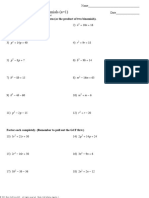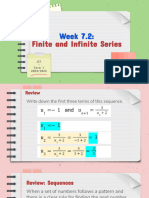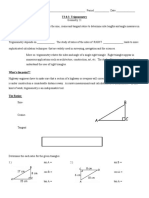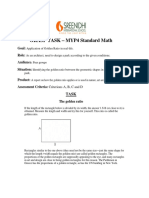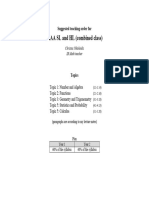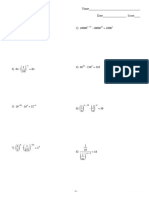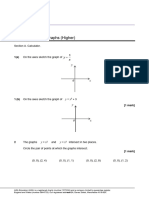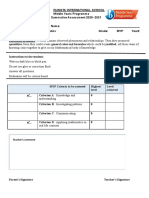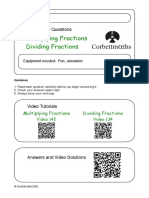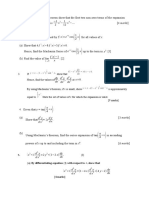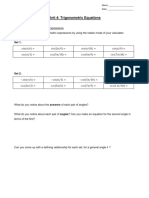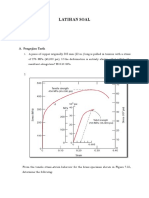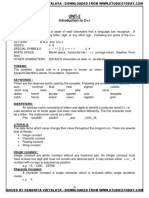0% found this document useful (0 votes)
136 views8 pagesLogarithmic Functions 5
This document provides an overview of logarithmic functions including:
- The definition and properties of logarithmic functions
- Converting between logarithmic and exponential forms
- Graphing logarithmic functions and finding their domains
- Solving exponential and logarithmic equations
- Using the change-of-base formula
- Examples of evaluating, graphing, and solving various logarithmic expressions and equations
Uploaded by
Saba KhurramCopyright
© © All Rights Reserved
We take content rights seriously. If you suspect this is your content, claim it here.
Available Formats
Download as PDF, TXT or read online on Scribd
0% found this document useful (0 votes)
136 views8 pagesLogarithmic Functions 5
This document provides an overview of logarithmic functions including:
- The definition and properties of logarithmic functions
- Converting between logarithmic and exponential forms
- Graphing logarithmic functions and finding their domains
- Solving exponential and logarithmic equations
- Using the change-of-base formula
- Examples of evaluating, graphing, and solving various logarithmic expressions and equations
Uploaded by
Saba KhurramCopyright
© © All Rights Reserved
We take content rights seriously. If you suspect this is your content, claim it here.
Available Formats
Download as PDF, TXT or read online on Scribd
/ 8








